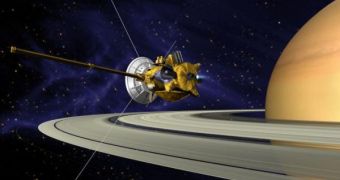In one of its most recent transmissions, the Cassini space probe relayed back information confirming the existence of liquid hydrocarbon lakes on the surface of Saturn's moon, Titan. The probe was only able to identify the existence of the lakes by analyzing the changes in landscapes over periods of time, which astronomers believed were triggered by rainfall or some similar process. The lakes exist near the southern and northern pole of the moon, and experts have for a long time believed that they might be filled with some sort of liquid. Now, finally, they have the proof they needed.
“A recent study suggested that there's not enough liquid methane on Titan's surface to resupply the atmosphere over long geologic timescales. Our new map provides more coverage of Titan's poles, but even if all of the features we see there were filled with liquid methane, there's still not enough to sustain the atmosphere for more than 10 million years,” explains the lead author of the new paper detailing the find, Dr. Elizabeth Turtle, who is also a Cassini imaging team associate at the Johns Hopkins University (JHU) Applied Physics Laboratory, in Laurel, Maryland.
The Imaging Science Subsystem (ISS) camera onboard Cassini was responsible for identifying the variations on the moon's crust, and its high-resolution sensors analyzed the entire surface of the celestial body thoroughly before sending back information. Infra-red images captured August 15-16, 2008 over the northern pole were used in the new study to detail the new map of Titan, and to assess the dimensions and the volume of the lakes.
Apparently, the northern hemisphere is very rich in methane, so, most likely, when the summer season hits, convective forces will generate large amounts of clouds, which will further fill the lakes in the region with hydrocarbons. The southern area also contains important amounts of methane, but lags far behind the northern side, where reserves are impressive.
"Titan's tropics may be fairly dry because they only experience brief episodes of rainfall in the spring and fall as peak sunlight shifts between the hemispheres. It will be interesting to find out whether or not clouds and temporary lakes form near the equator in the next few years," concludes another member of the Cassini imaging team, Dr. Tony DelGenio of NASA's Goddard Institute for Space Studies in New York, who was also the co-author of the new paper.

 14 DAY TRIAL //
14 DAY TRIAL //